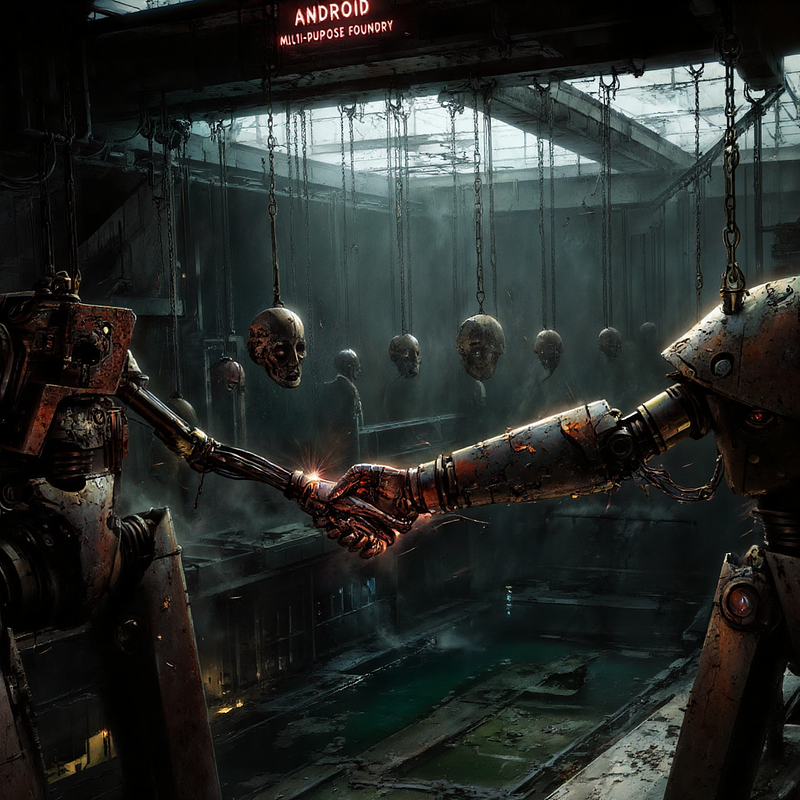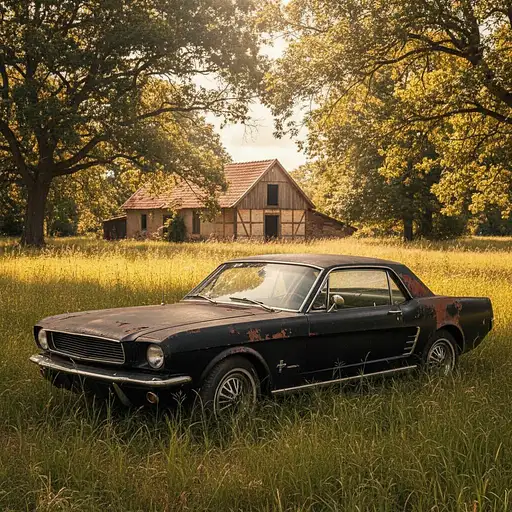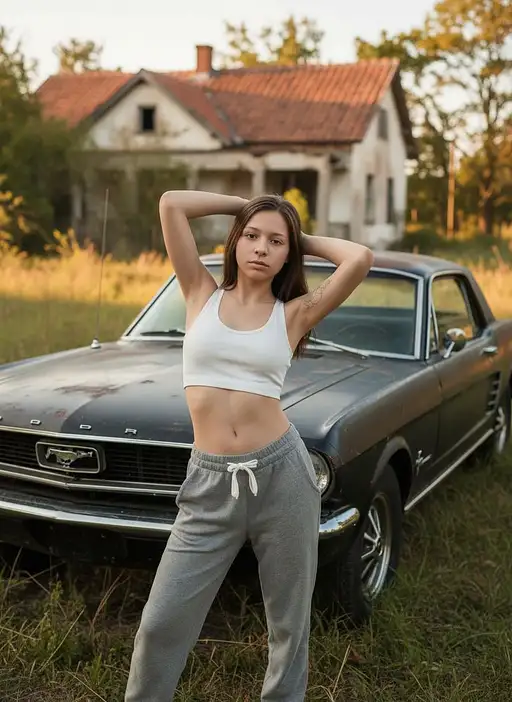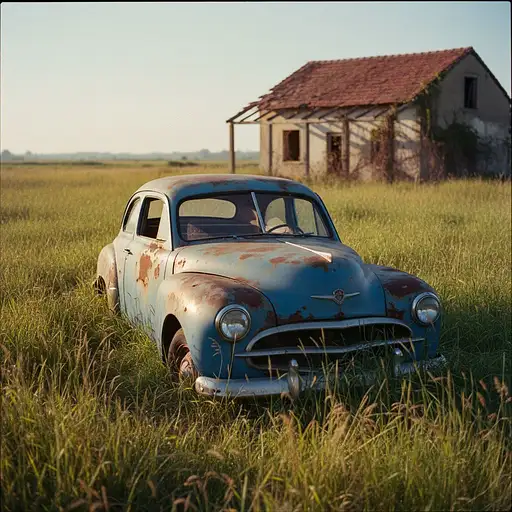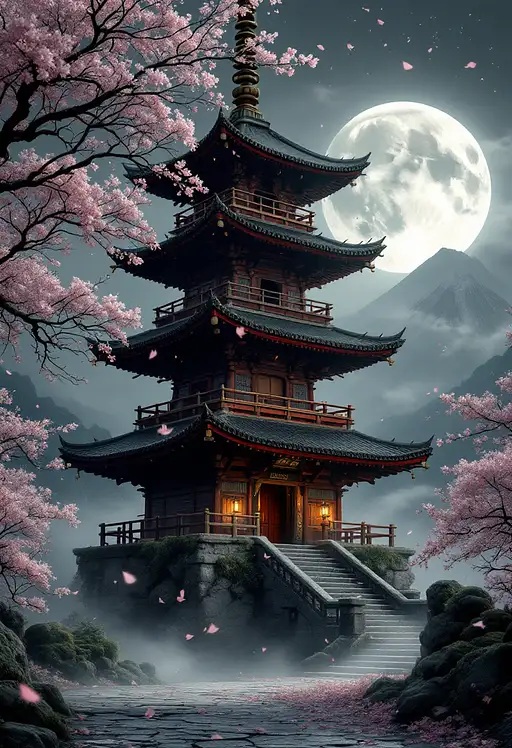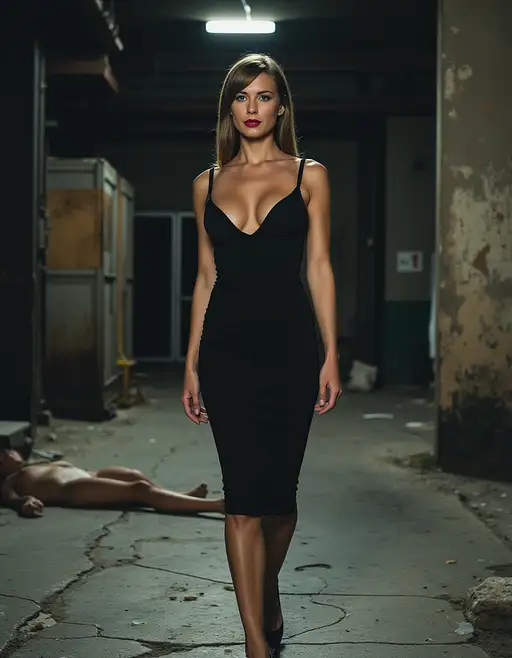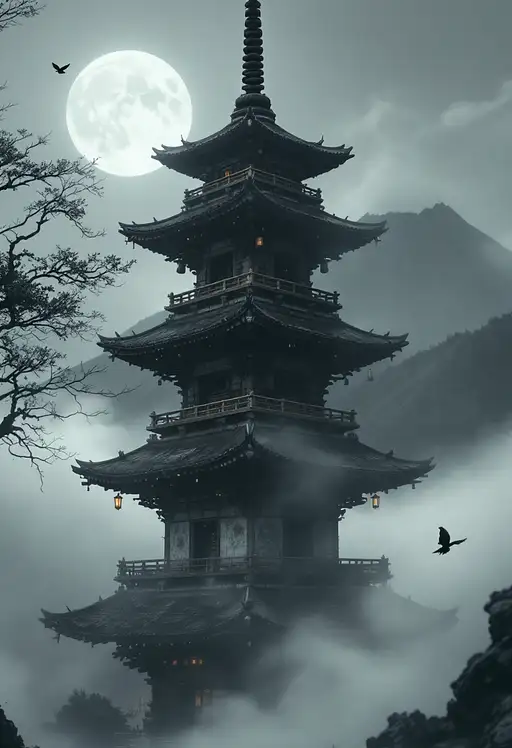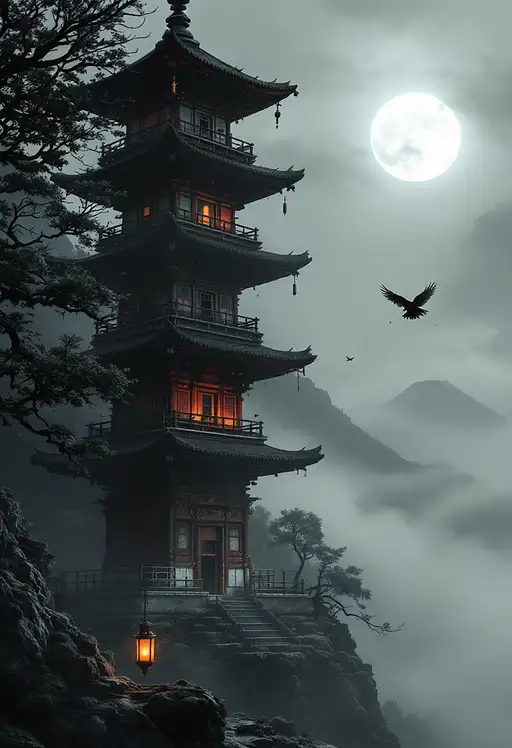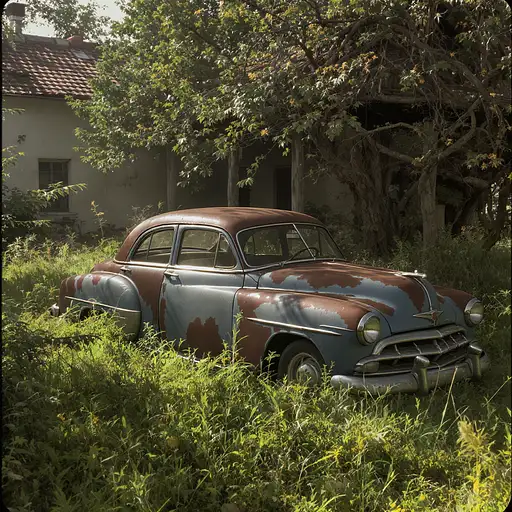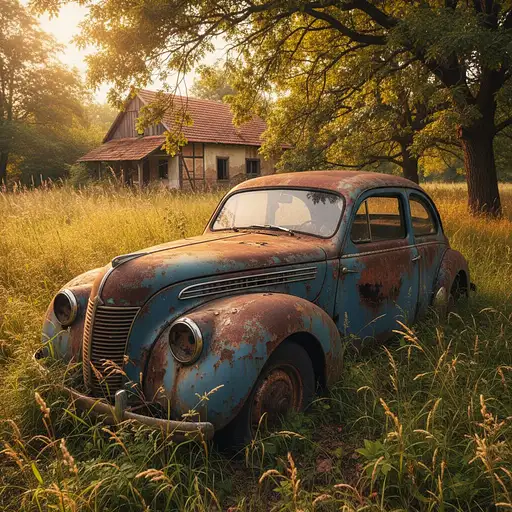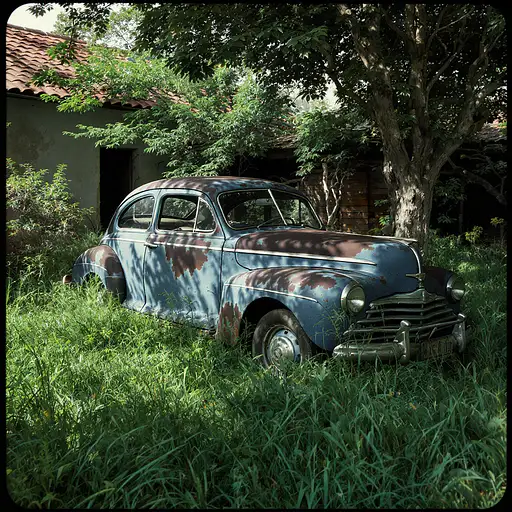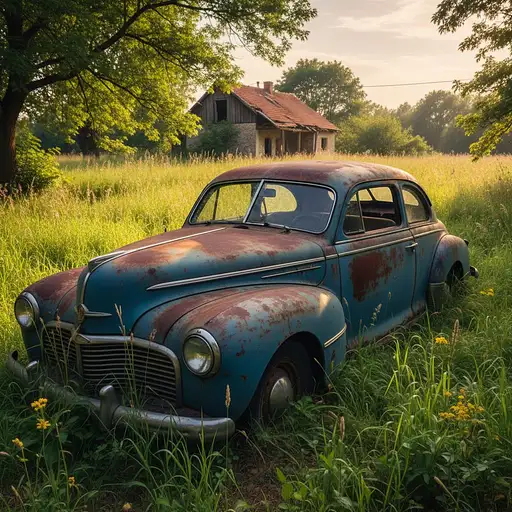2 months ago
A dark, decayed factory steeped in dampness and neglect. Rows of broken, lifeless androids hang from chains and diagnostic cables, their battered forms suspended like relics of a forgotten era. Each android faces forward, their heads slumped and limbs dangling limply, as if gravity alone holds them in place. The androids are diverse—some humanoid with slender frames and fragmented synthetic skin, others industrial with exposed hydraulics, rusted plating, and shattered components. Many are missing limbs, their wires and cables hanging loosely, sparking faintly in the oppressive gloom.
Among the rows, two androids stand out—their hands intertwined in a final act of connection before their power cells died. One is humanoid, its delicate features cracked and weathered, its synthetic skin peeling to reveal intricate, rusting frameworks. The other is industrial, bulkier, with heavier plating and exposed joints, its arm barely holding on by a tangle of wires. Their clasped hands emit a faint glow, flickering like dying embers, the last remnant of their shared existence.
The factory is drenched in atmosphere. Thick haze and mist cling to every surface, illuminated by the weak, flickering glow of malfunctioning CRT screens and sparking cables. Dim red light spills from a cracked overhead lamp, casting diffuse shadows across the room. A faint, rhythmic drip echoes through the cavernous space, the sound amplified by the oppressive silence. A flickering sign above the rows reads:
“ANDROID MULTI-PURPOSE FOUNDRY.”
The foundry walls are lined with rusted, obsolete machinery and control panels. Pools of stagnant water collect on the floor, reflecting the faint, scattered light in jagged, broken patterns. Dust and smoke swirl in the air, cutting through the faint godrays that streak through shattered skylights, further obscured by the thick haze. The shadows of dangling chains and lifeless androids create eerie silhouettes on the mist-covered walls.
The atmosphere is suffocatingly gritty, a testament to the decay of innovation. The androids stand as silent witnesses to a bygone era, their shattered forms a chilling reflection of the hubris and failure of their creators. The two holding hands, surrounded by rows of decaying machines, remain a quiet, haunting symbol of connection amidst the ruin.

